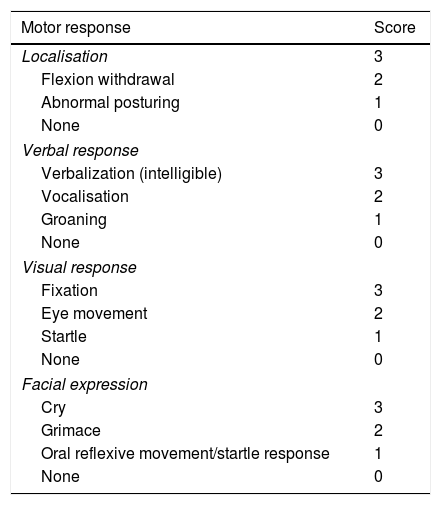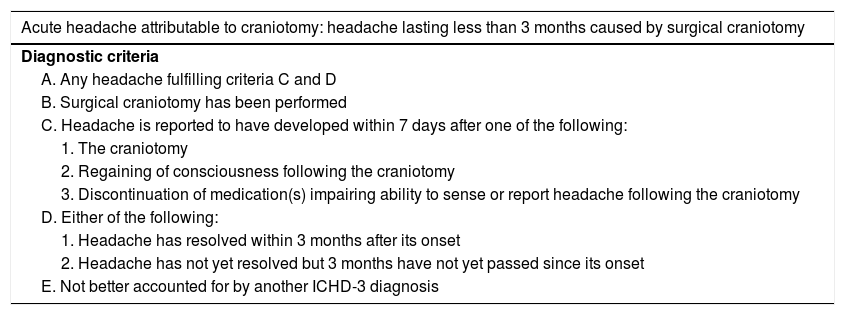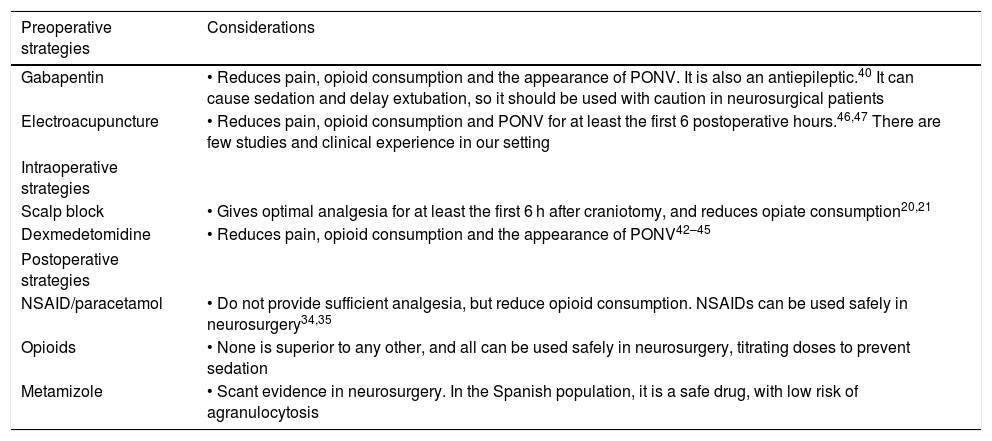The aim of this narrative review is to confirm that acute pain after craniotomy is frequent and presents moderate to severe intensity. It also aims to report on the importance of treating not only the pain after craniotomy but also to prevent it in order to reduce the incidence of chronic pain. We should understand that among the current options we not only have conventional analgesics for the postoperative period (Non-steroidal anti-inflammatory, paracetamol, cyclooxygenase inhibitors 2, opioids). Performing a scalp block prior to surgical incision or after surgery, the use of intraoperative dexmedetomidine and the perioperative administration of pregabalin are alternatives that are gaining strength. The management of postcraniotomy pain should focus on a multimodal analgesia throughout the perioperative period, framed within the current concept of the "enhaced recovery after surgery" (ERAS).
El objetivo de esta revisión narrativa es confirmar si el dolor agudo tras craneotomía es frecuente y presenta una intensidad entre moderada-severa. Además pretende informar de la importancia de tratar no sólo el dolor tras craneotomía sino prevenirlo para disminuir la incidencia de la cronificación del dolor. Debemos conocer que entre las opciones actuales no solo disponemos de los analgésicos convencionales para el postoperatorio (antiinflamatorios no esteroideos, paracetamol, inhibidores de la ciclooxigenasa 2, opiáceos). La realización de un bloqueo nervioso del cuero cabelludo previa a la incisión quirúrgica o tras la cirugía, el uso de dexmedetomidina intraoperatoria y la administración perioperatoria de pregabalina son alternativas que están ganando fuerza. El manejo del dolor postcraneotomía debe basarse, por tanto, en una analgesia multimodal durante todo el perioperatorio, enmarcándose dentro del concepto actual del protocolo “enhaced recovery after surgery” (ERAS).









